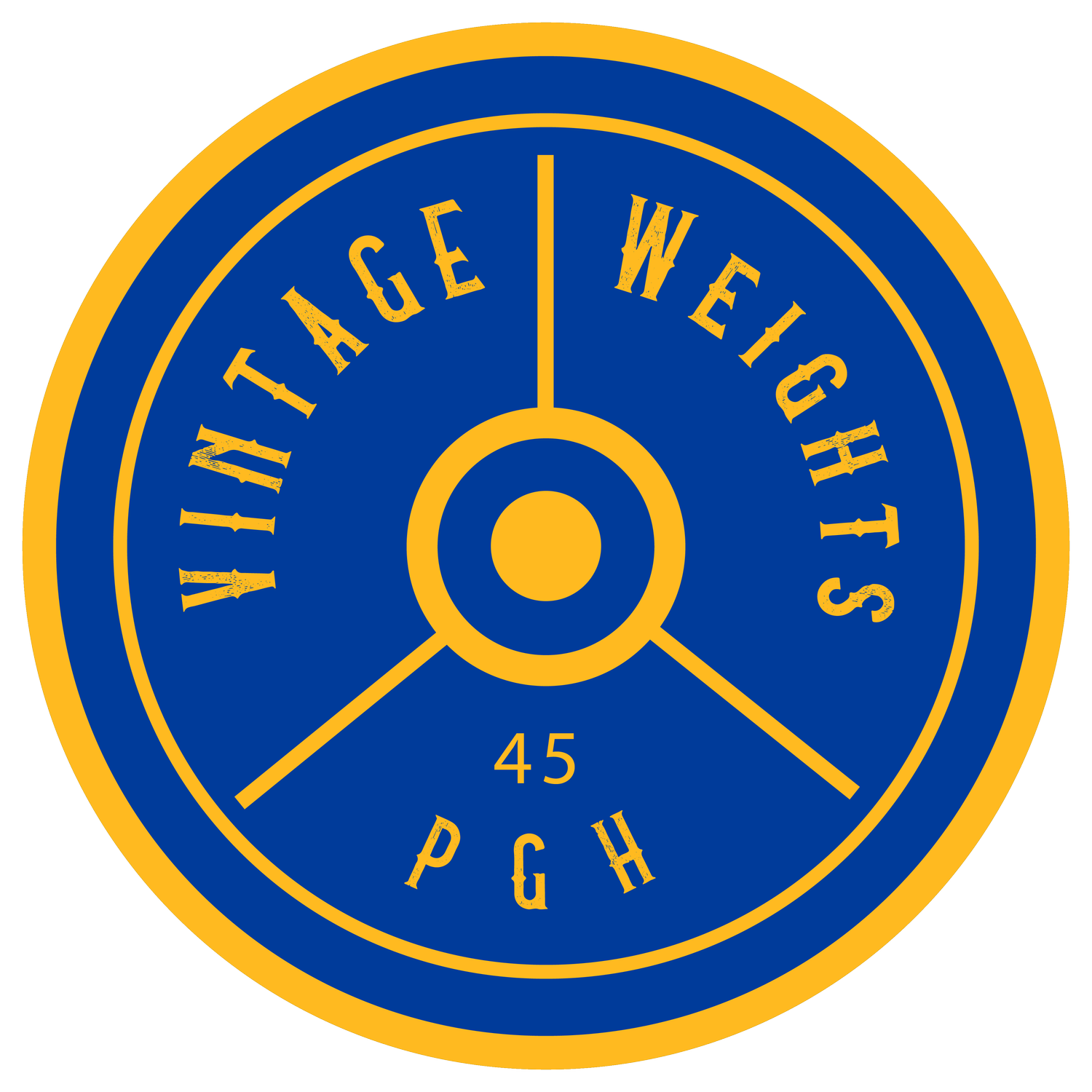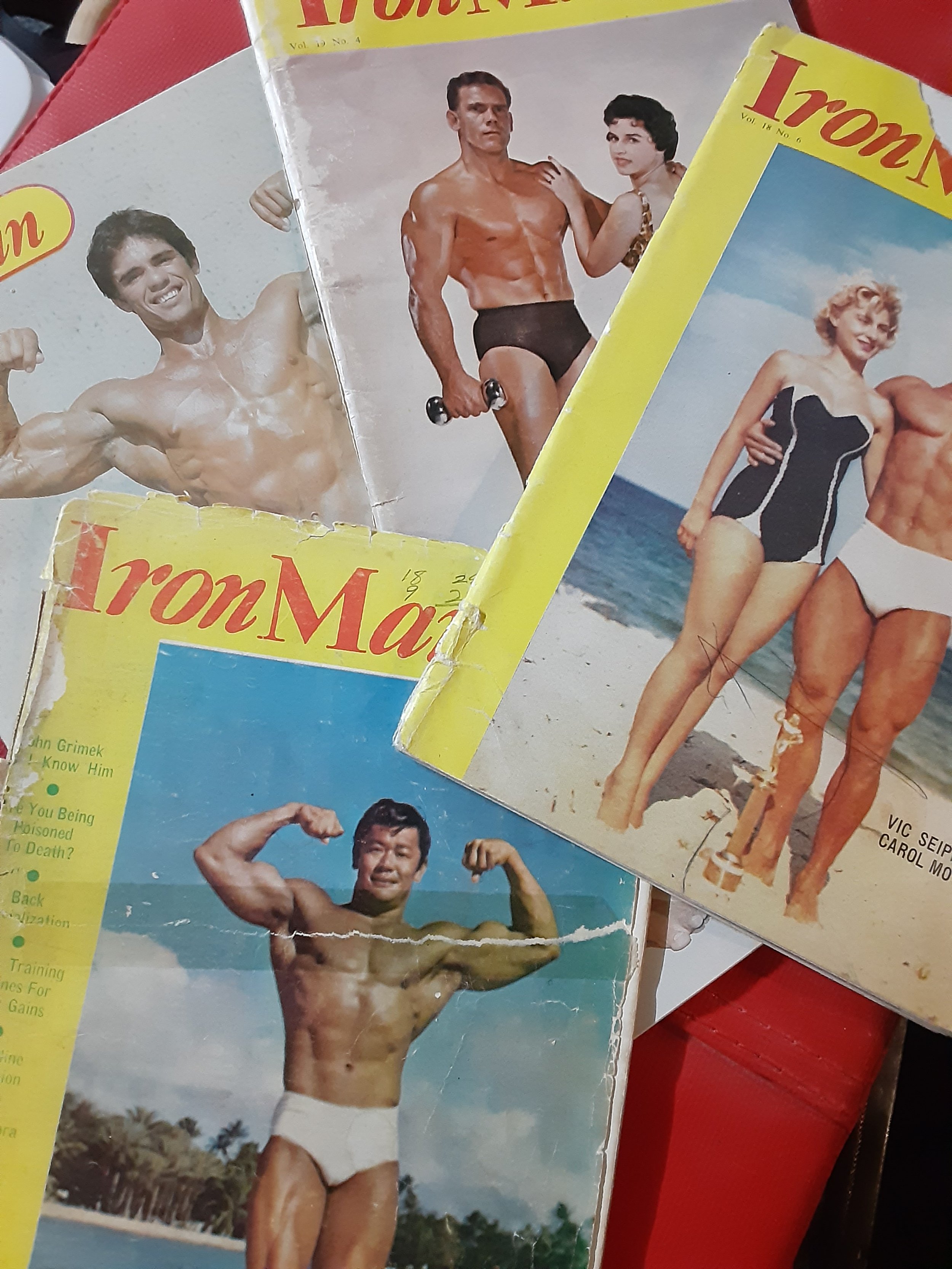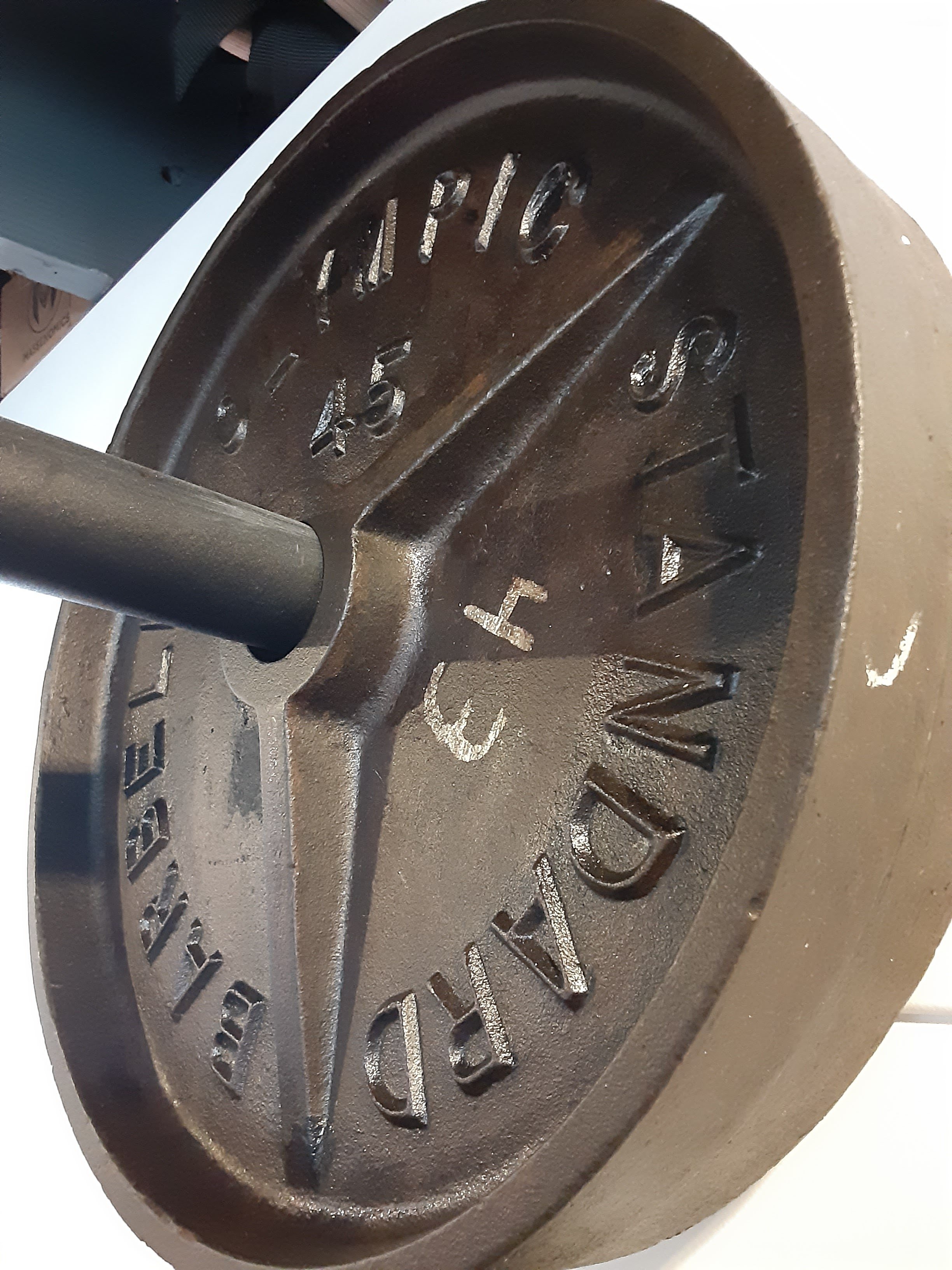What are Skinny Scripts?
Peary Rader’s Iron Man Magazine
I’d seen and heard mixed reviews of Skinny Scripts among collectors. And for a long time, I was confused who made them or why they were called Skinny Scripts. I’d Google Skinny Scripts thinking it was a brand name and turn up nothing but embroidery and font related hits. Eventually, I heard about their history and tracked down some Iron Man magazines to see for myself. There they were! They weren’t sold as Skinny Scripts. That’s just a nickname. They were Iron Man’s unbranded Olympic weight plates for a period of time - technically sold by Body Culture Equipment Company of Alliance, Nebraska. Peary Rader, more about this legend in a future project, founded Iron Man Magazine in 1936 with his wife. Iron Man is still published today although no longer owned by the Rader family.
Olympic Weight Plates Advertisement within a 1980 Iron Man Magazine
I tucked this knowledge away, added it to my thought process when searching for vintage iron, and soon enough I saw a listing in Pittsburgh with a pile of deep dish plates in April of 2022. In the listing’s picture, they were stacked haphazardly on a dimly lit porch. Small insects and dust particles drifted between the plates and the lens. The listing title was a rare one: Vintage Weights. I almost never see old weights listed and titled as vintage weights unless from a collector, and a collector would have elaborated, using the word “vintage” along with a more specific title. The plates on the dark porch were undoubtedly Skinny Scripts.
The Allegheny Observatory
The seller listed them for a dollar a pound and responded promptly, no negotiation required. I asked to buy, and the seller agreed. Done. The next night I drove out to the Observatory Hill neighborhood of Pittsburgh. The neighborhood is so named because it surrounds the Allegheny Observatory, a University of Pittsburgh astronomical research institution founded in1859.
Allegheny Observatory is situated within Riverview Park, and the surrounding neighborhood is a mix of stately older homes, mansions, and some aging homes. I arrived at the pickup location, a house overlooking the Pittsburgh skyline, at dusk.
The stone steps winding up to the house crumbled beneath my feet, and the wooden stairs to the porch bowed. I wondered if the weight of the plates being carried would be too much! A dog barked at me through a window with its screen ripped and flapping in the breeze, and there on the porch, the plates sat in the dim light. As I waited for the seller to answer the door, I looked over the plates wondering what made up the white and brown bumps dotting them. Then I heard a scratching noise and looked around the corner of the porch to see the source, chickens, and that's when I realized the deep dish were dotted with chicken poop.
The woman who came to the door seemed to be concerned with the age and condition of the plates. She reminded me that they were vintage, a tentative tone in her voice. I thanked her and explained that I loved older weights. I gave her the money and she warned me to watch out for the chickens. I thought it was a funny moment, because I was much more concerned with the dog. She seemed younger than the plates, and she said they’d found them in the house - I assume when they moved in. It made me wonder how long these plates had rested in forgotten dust. How many years had they hibernated? Were they kept outside? The chicken poop looked to be of varying vintage! The seller was very nice, and she thanked me for the purchase. I got the feeling that she was happy that I appreciate the plates and would put them to use.
Once home, I examined the plates closer and dusted off the chicken poop. After using Oxalic Acid (find directions here) to clean off the surface rust and grime, I loved the deep brown patina. I also liked the handwritten 43 on the 45s, a foreshadowing of their accuracy or the lack thereof. Weights have a story! At some point in time, someone ordered these from Iron Man Magazine. Later they weighed them, deciding to be an honest lifter. They marked the underweight 45s. I find it interesting that they didn’t mark the 35s and 10s, which turned out to be mismatched in weight. Also worth noting is that only one of the 45 pound plates is 43 pounds. The other is closer to 45. Other than the 25s, this set is very lopsided, which made me wonder if the previous owner ever loaded the bar in such a way that one side was 20 pounds less than the other. What a surprise that would be! Of course, the weights of the plates within this specific set don’t represent the entire run of Skinny Script weight plates. I plan to find more of them, weigh the plates as I find them, and assemble an accurate set, selling off or trading the extras. I’ll be honest about their inaccuracies though.
The Full History, Restoration, and Review Video
One of the 10 pound plates is actually less than 9 pounds!
The criticism I’d previously heard of Skinny Scripts was mostly true. They have casting flaws, they’re inaccurate, and they have quite a bit of play on the bar. But as the owner of several different brands of deep dish, I assure you, Skinny Scripts are far from the only vintage deep dish plates that fit that description of flaws. So why are they so much lower valued? In my best opinion, their lower valuation is due to two factors. Supply and demand play a part in any collectable, and Skinny Scripts were mass produced and sold through a widely distributed and popular magazine. The second factor in their valuation would be their plain appearance. More decorative and branded plates of the same era, quality, and relative production exist that are regularly valued at a greater price. For example, Universal deep dish plates have a stylish cursive looking font. Or even Billard Olympic Plates, which have similar script to the Skinny Scripts at least say the brand, Billard. If Skinny Scripts said Iron Man on them, would they be more prized? Both Universal and Billard have rich histories, but I think historical relevance is the aspect of Skinny Scripts that is undervalued by some.
A Billard Olympic Weight Plate
I will explore Iron Man Magazine and Peary Radar’s contributions to strength history in a future endeavor, but it is the connection to Iron Man Magazine that solidifies my love for these plates. When I hold and lift Skinny Scripts, I know I’m holding the plates a local lifter ordered from Iron Man. I’m lifting history. The feel of vintage deep dish in hand is a feeling unparalleled by any other weight plate. It’s a unique grip and texture. Mike Barresi, friend and fellow collector, recently said to me, “I can tell how old a weight is just by the touch.” And it’s this inherent history that makes Skinny Scripts a valued part of my collection. From the height of Observatory Hill to the depth of my basement gym, 50-ish years of service and for a period of time forgotten hibernation, the unbranded Olympic weight plates with the narrow font will continue to build strength.
Old Weights, New Gains!
- Rob
Note: If you enjoyed this article, please consider subscribing to VintageWeightsPGH on YouTube and following VintageWeightsPGH on Instagram. Shopping for your restoration supplies and tools through the links provided on this website also contribute to future videos and projects. Thank you for your support!
Sources:
“Allegheny Observatory.” University of Pittsburgh, Department of Physics & Astronomy, 13 May 2013, https://sites.pitt.edu/~aobsvtry/
Olympic Weight Advertisement, Iron Man, Iron Man Magazine, Volume 40, Number 1, October/November 1980
“Iron Man (Magazine).” Wikipedia, Wikipedia, 31 August 2022, https://en.wikipedia.org/wiki/Iron_Man_(magazine)
Iron Man Magazine, https://www.ironmanmagazine.com/
“Observatory Hill, A Pittsburgh Neighborhood.” Observatory Hill Incorporated, http://www.observatoryhill.net/About.aspx
“Observatory Hill.” Pittsburgh Beautiful, American Beautiful Network, 2021, https://www.pittsburghbeautiful.com/pittsburgh-neighborhoods/observatory-hill/










